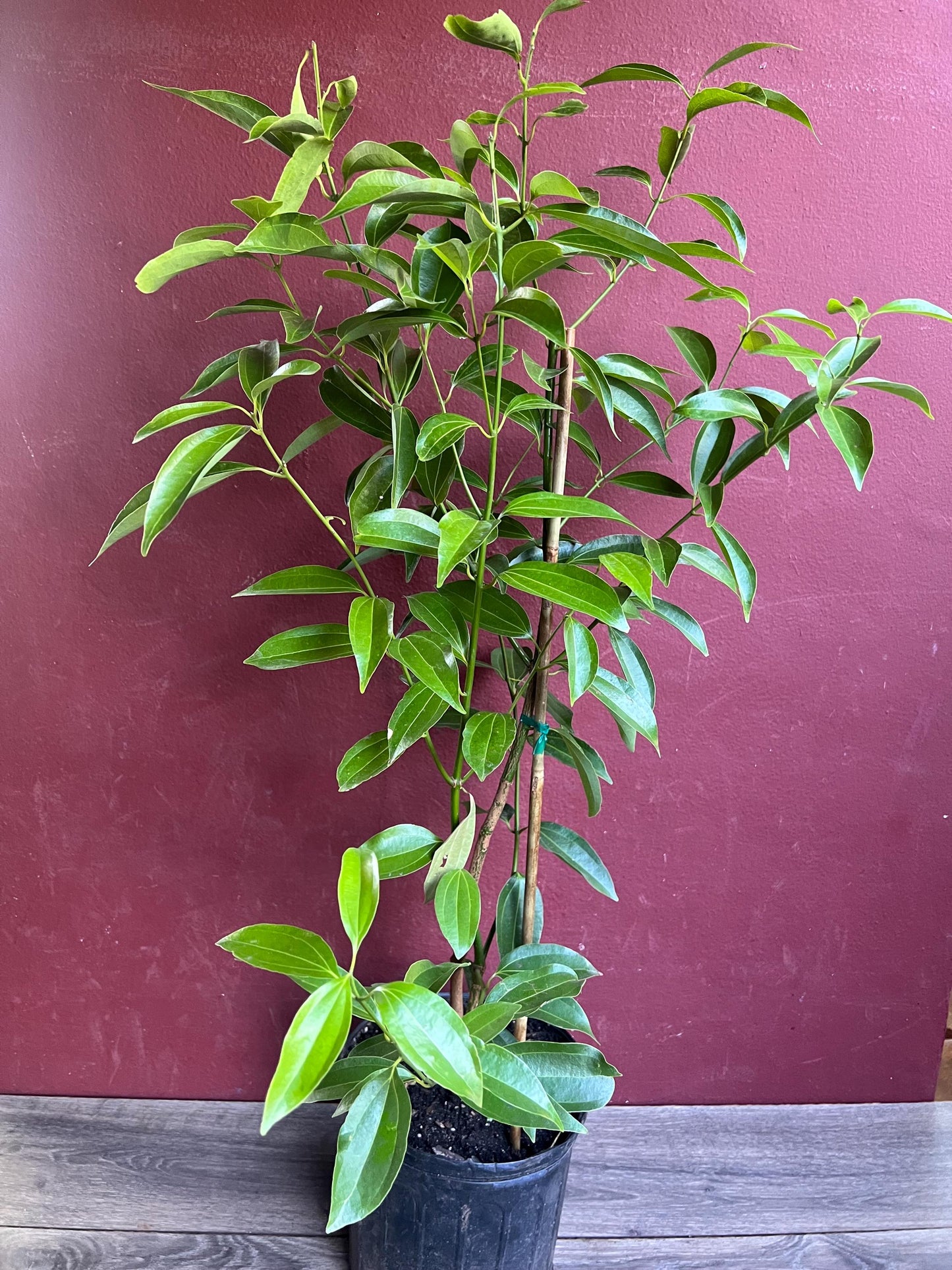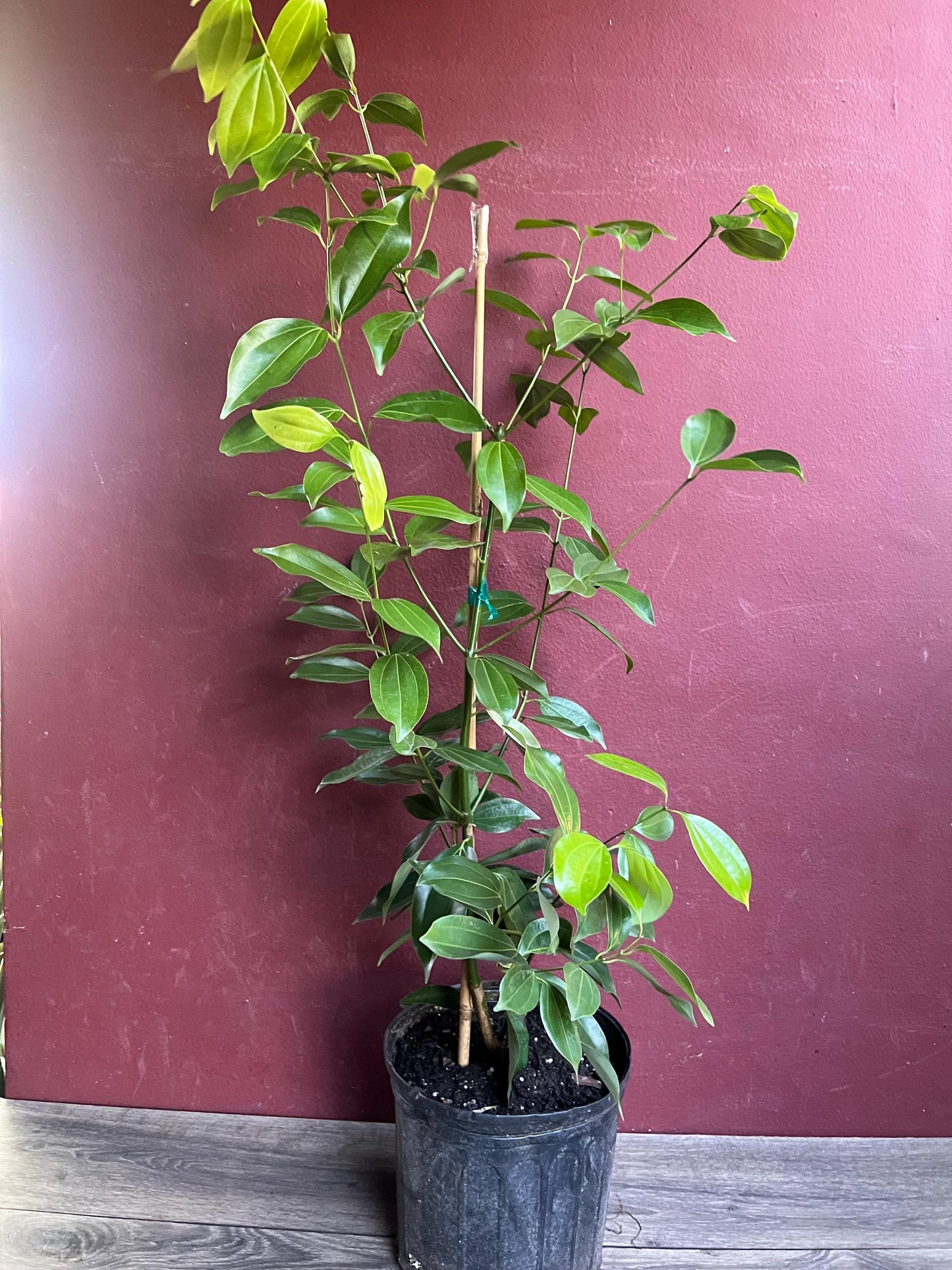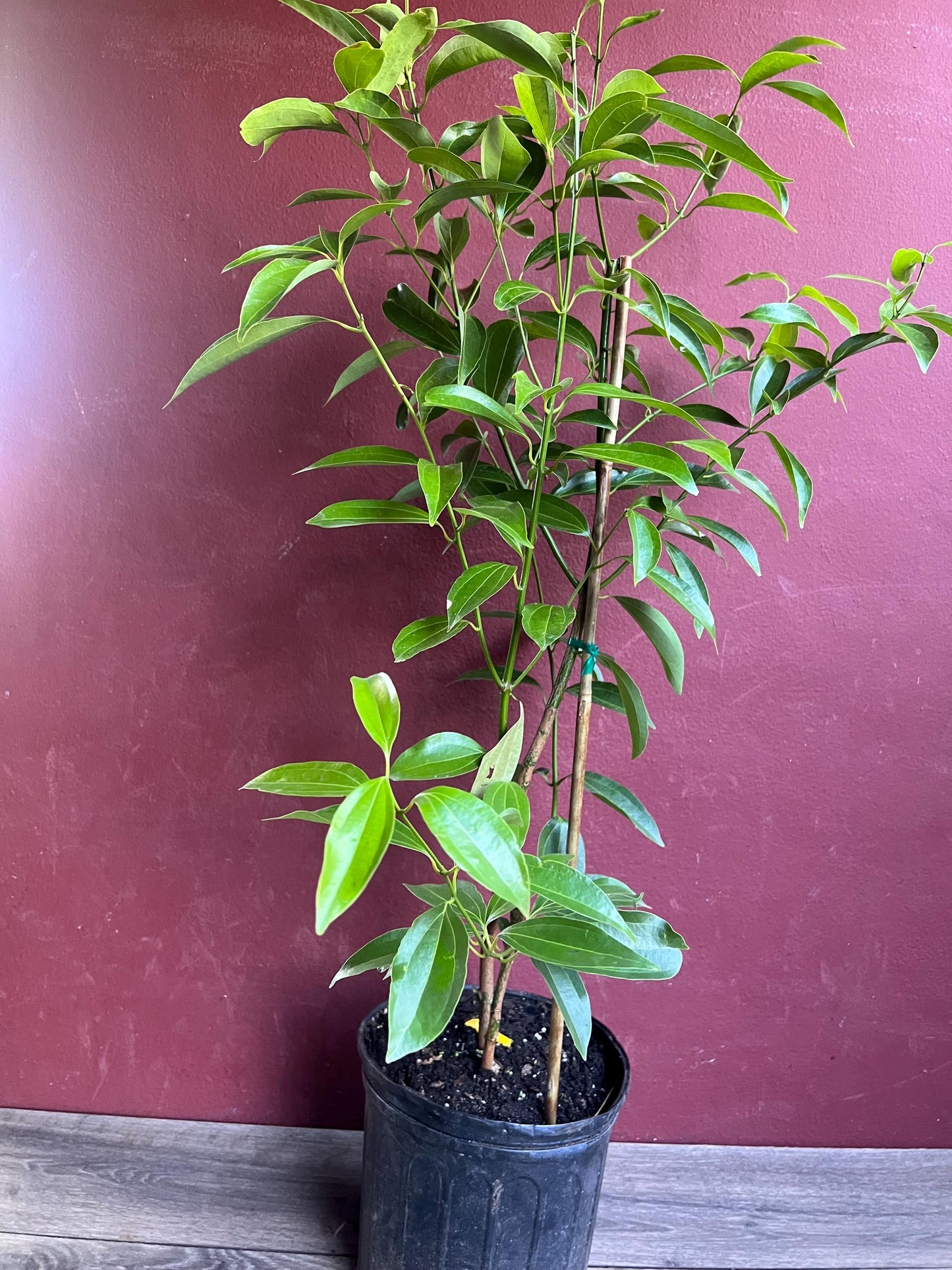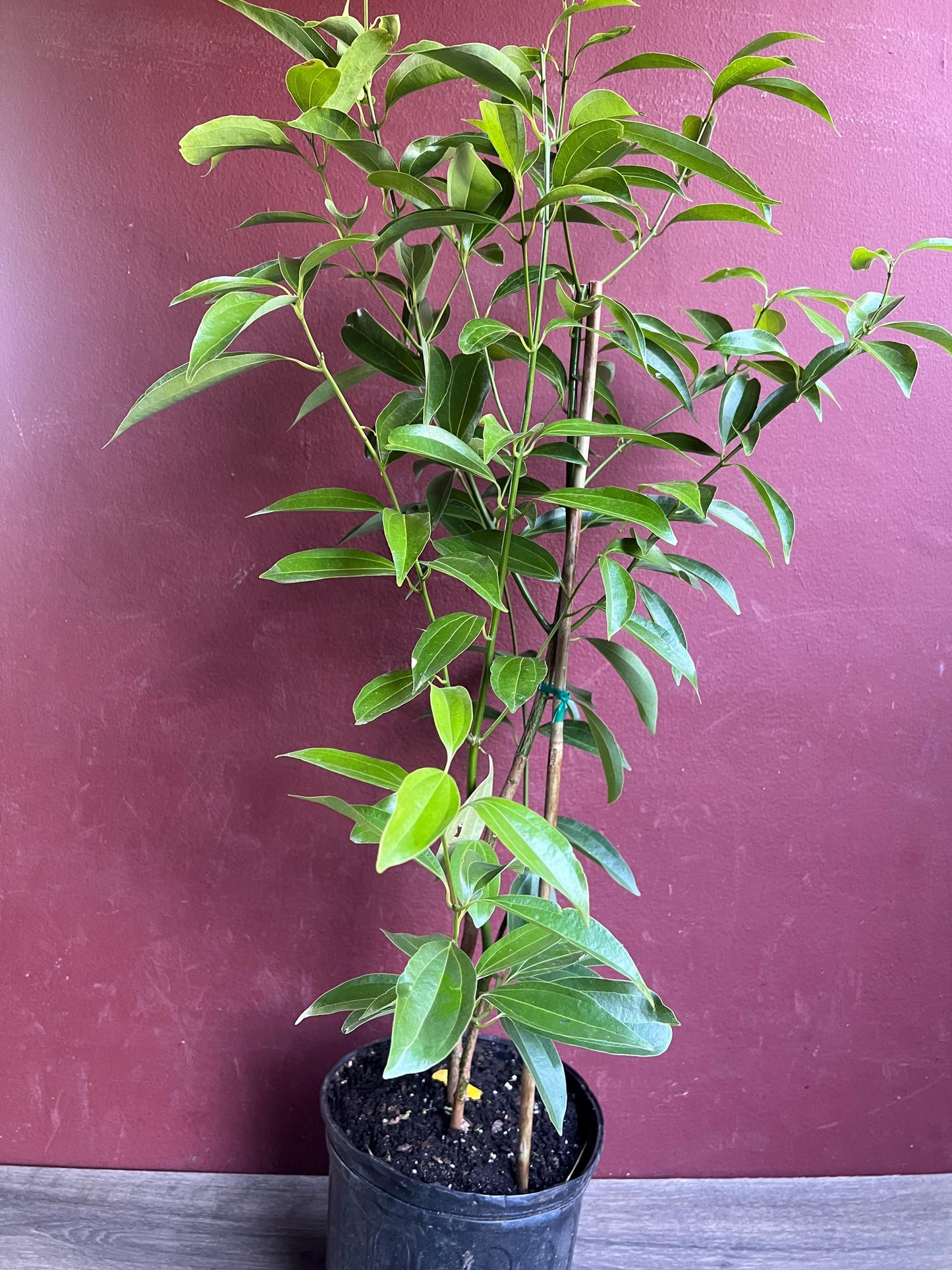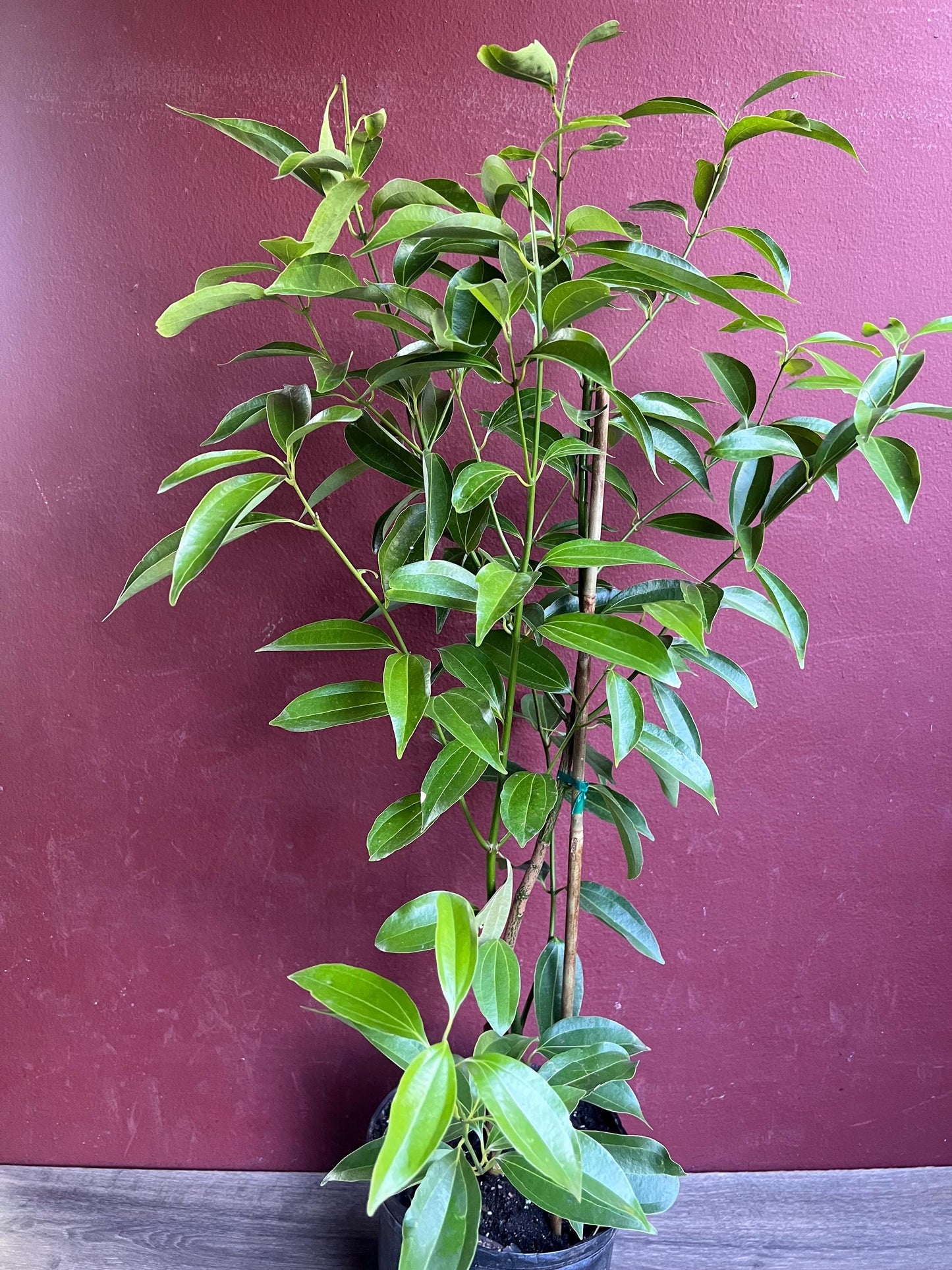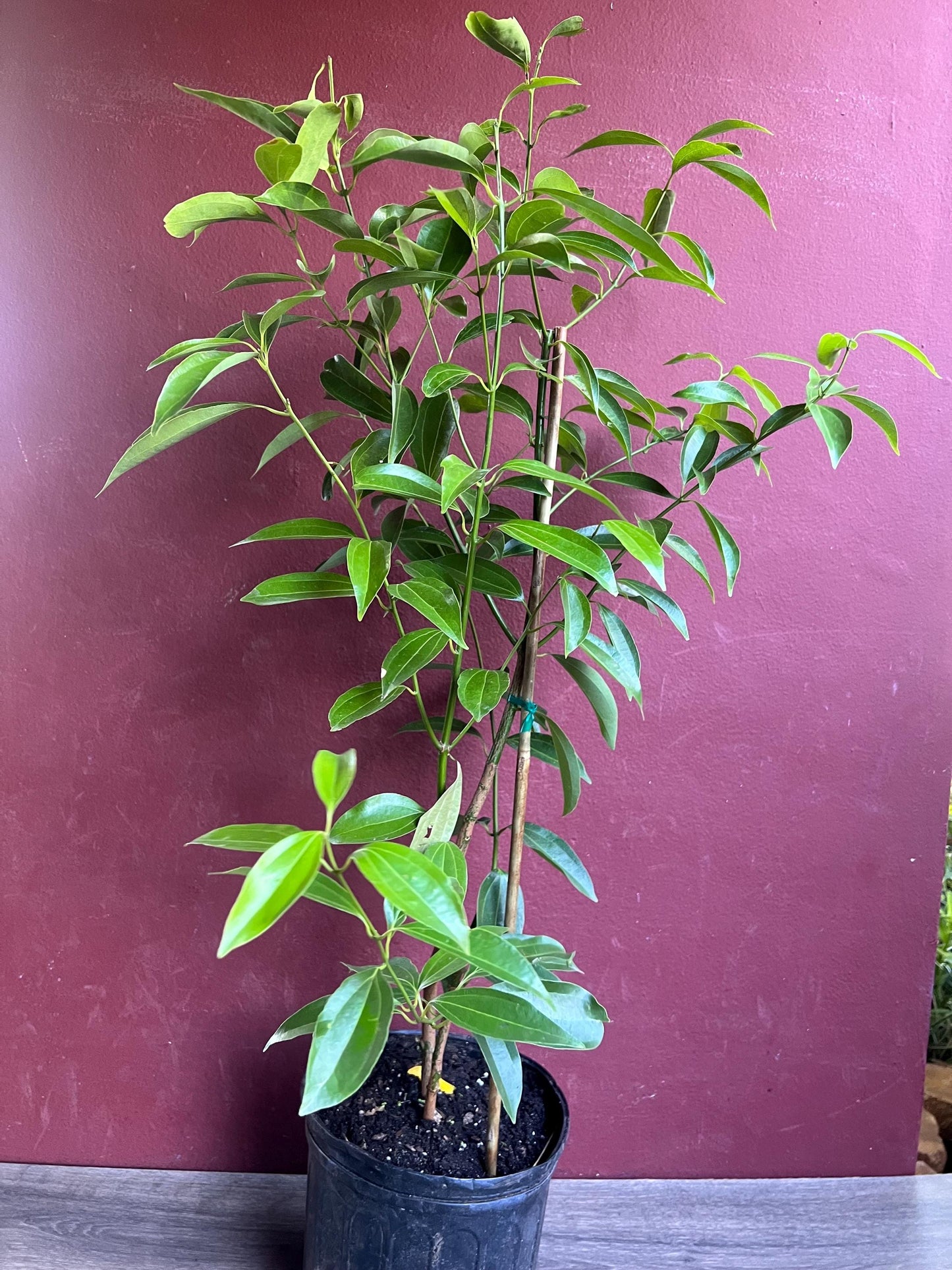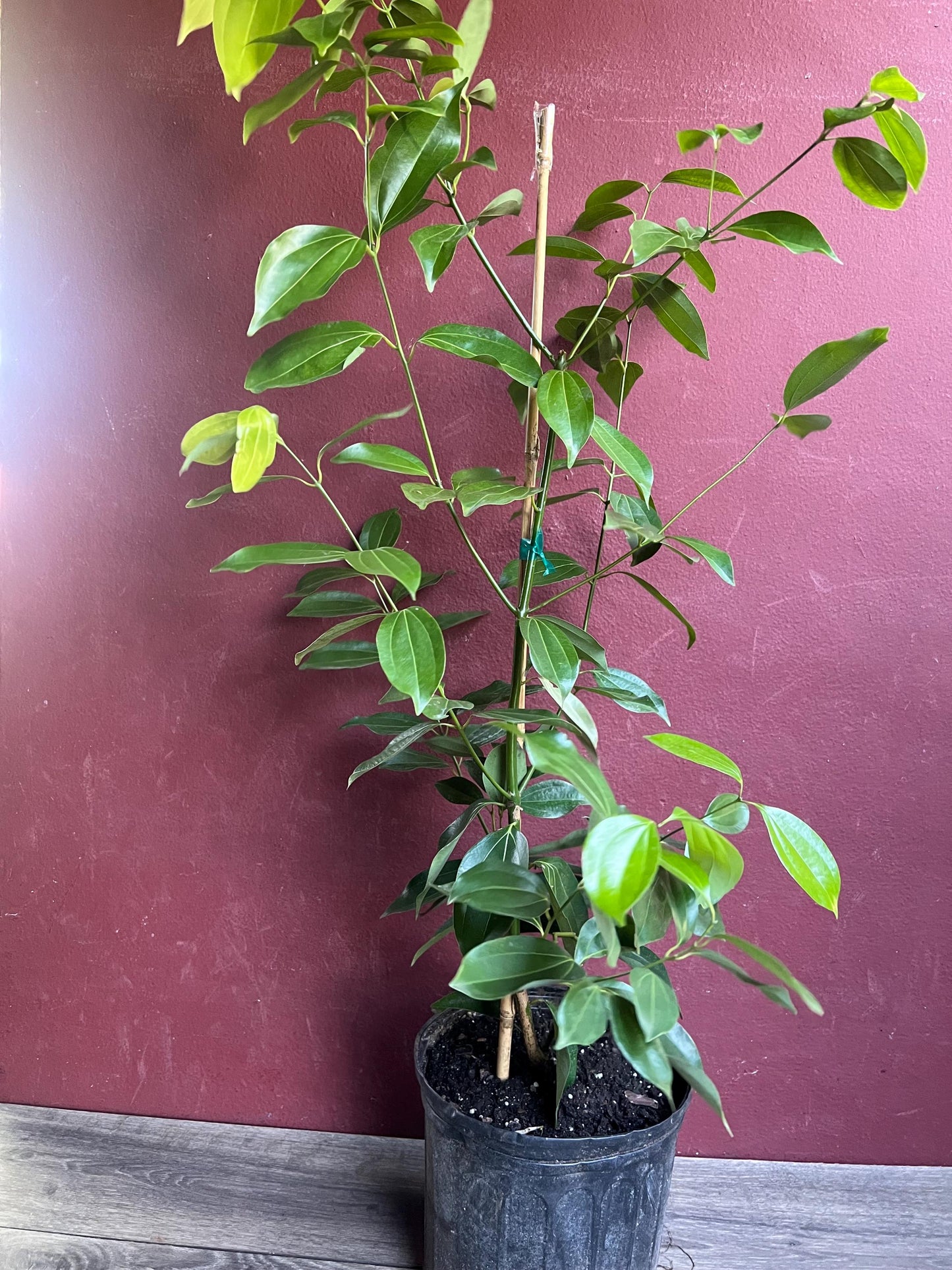1
/
of
7
Cinnamon Tree in 10" Pot, Cinnamomum zeylanicum, CEYLON CINNAMON
Cinnamon Tree in 10" Pot, Cinnamomum zeylanicum, CEYLON CINNAMON
Regular price
$92.58 USD
Regular price
$123.44 USD
Sale price
$92.58 USD
Unit price
/
per
Shipping calculated at checkout.
Couldn't load pickup availability
Note: You will receive one Cinnamon Tree in 10" pot similar to the pictures
1. Light Requirements
- Full Sun: Cinnamon trees need full sun to grow properly and produce quality bark. Ensure they receive at least 6-8 hours of direct sunlight per day.
- Partial Shade: In regions with very hot summers, cinnamon can tolerate some afternoon shade to prevent leaf scorch. Indoors, place the tree near a bright window where it can get plenty of indirect light.
2. Temperature
- Warm Temperatures: Cinnamon trees thrive in tropical climates and prefer temperatures between 70°F and 85°F (21°C to 29°C). They are not frost-tolerant and will suffer damage or die if exposed to temperatures below 50°F (10°C).
- Winter Care: If you live in a cooler region, grow cinnamon in a container and bring it inside during the winter months to protect it from cold weather.
3. Soil Requirements
- Well-Draining, Moist Soil: Cinnamon trees prefer slightly acidic to neutral soil with a pH between 5.5 and 7.0. The soil should be well-draining to prevent waterlogging, which can cause root rot. Sandy loam or a mix with good drainage works best.
- Avoid Heavy Clay: Heavy, clay-like soils that retain water are not suitable for cinnamon trees as they can lead to root issues.
4. Watering
- Consistent Moisture: Cinnamon trees like moderate moisture, so water them regularly, especially during the growing season. Keep the soil consistently moist, but not soggy. Allow the top 1-2 inches of soil to dry before watering again.
- Humidity: These trees thrive in high humidity. If grown indoors, increase humidity around the plant by using a humidifier, placing a tray of water and pebbles beneath the pot, or misting the leaves regularly.
5. Fertilizing
- Regular Feeding: During the growing season (spring through summer), feed your cinnamon tree with a balanced, slow-release fertilizer or one designed for tropical plants. Fertilize every 4-6 weeks to encourage healthy growth.
- Organic Fertilizers: You can also use organic fertilizers like compost, fish emulsion, or seaweed extract to provide nutrients. Reduce fertilizing in winter when the tree is dormant.
6. Pruning and Maintenance
- Prune for Shape: Cinnamon trees can be pruned to maintain shape and size. Trim back any dead or damaged branches and thin the canopy to allow sunlight and air to reach the inner parts of the tree. This also helps prevent disease.
- Harvesting Cinnamon: The inner bark is harvested by cutting branches and peeling off the outer bark to expose the inner, softer layer. This is done every 2-3 years for fresh bark production. Be careful not to over-harvest, as this can harm the tree.
7. Pests and Diseases
- Pests: Cinnamon trees may attract pests like mealybugs, scale insects, or spider mites. Check the leaves regularly for any signs of infestation. Use neem oil or insecticidal soap to treat pest issues.
- Root Rot: Ensure the tree is planted in well-draining soil to prevent root rot, a common issue caused by overwatering or poorly-draining soil.
- Fungal Diseases: In humid climates, cinnamon trees can develop fungal infections. Maintain good air circulation around the tree and avoid overhead watering to keep the leaves dry.
8. Container Growing
- Choose a Large Pot: If you're growing cinnamon in a pot, choose a large container (at least 10-15 gallons) with adequate drainage. Cinnamon trees' roots need space to spread.
- Repotting: Repot the tree every 2-3 years to refresh the soil and give the roots more room. Ensure the new pot is only slightly larger than the previous one to avoid waterlogging.
9. Harvesting Cinnamon
- Harvesting Bark: Cinnamon is harvested from the inner bark of the tree. When the tree is 2-3 years old, you can begin harvesting small amounts of bark. Cut a few branches, peel away the outer bark, and scrape the inner bark for use. The bark should be dried to form cinnamon sticks.
- Timing: Harvest cinnamon when the tree is in active growth, typically during the late summer or early fall, when the bark is easiest to peel.
10. Propagation
- Growing from Seeds: Cinnamon trees can be propagated from seeds, though it may take some time to germinate and grow. Alternatively, cuttings can be used to propagate the tree, ensuring a faster establishment.
Summary
Caring for a cinnamon tree involves providing warm temperatures, full sun, and well-draining soil. Regular watering, high humidity, and balanced fertilization will promote healthy growth. Prune as needed for shape and size, and be mindful of pests and diseases. For cinnamon harvests, allow the tree to grow for a few years before carefully peeling the inner bark. If growing in cooler climates, keep the tree in a container and bring it indoors during winter. With proper care, a cinnamon tree can provide aromatic bark for spice use and add a unique touch to your tropical garden.
Share
